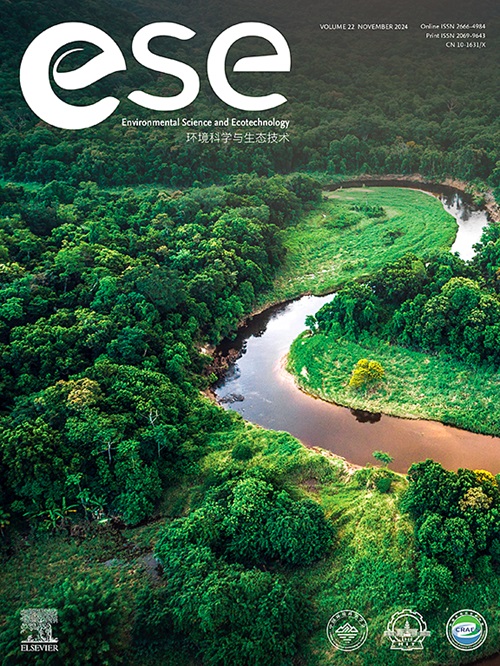Artificial intelligence of things for sustainable smart city brain and digital twin systems: Pioneering Environmental synergies between real-time management and predictive planning
IF 14
1区 环境科学与生态学
Q1 ENVIRONMENTAL SCIENCES
引用次数: 0
Abstract
Rapid urbanization, alongside escalating resource depletion and ecological degradation, underscores the urgent need for innovative paradigms in urban development. In response, sustainable smart cities are increasingly leveraging advanced technological frameworks—most notably the convergence of Artificial Intelligence of Things (AIoT) and Cyber-Physical Systems (CPS)—as critical enablers for transforming their management and planning processes. Within this dynamic landscape, Urban Brain (UB) and Urban Digital Twin (UDT) have emerged as prominent AIoT-powered city platforms. Defined by their complex functionalities and multi-layered architectures, these systems exemplify Cyber-Physical Systems of Systems (CPSoS), offering a cohesive foundation for integrating real-time operational responsiveness with strategic predictive foresight. Despite notable technological progress, a critical gap persists in effectively integrating the distinct yet complementary capabilities of UB and UDT within a structured and scalable framework. To the best of our knowledge, research on the explicit fusion of UB's real-time analytics—enabled through stream processing—with UDT's predictive analytics—driven by simulation modeling—is scant, if not absent. Most existing studies continue to treat UB and UDT as siloed systems, failing to recognize the critical need to synchronize their respective operational and strategic functions. This fragmentation limits the ability of urban systems to respond both adaptively and proactively to the complex, interrelated challenges of environmental sustainability. To address this critical gap, this study introduces a novel foundational framework—Artificial Intelligence of Things for Sustainable Smart City Brain and Digital Twin Systems—designed to synergistically integrate UB and UDT as AIoT-enabled platforms within a unified CPSoS architecture. This framework addresses the critical disconnect between real-time operational management and strategic predictive planning, delivering an integrated pathway for advancing environmentally sustainable smart city development goals. Harnessing the complementary strengths of UB and UDT, it empowers cities to respond dynamically to immediate urban demands while ensuring consistent alignment with long-term sustainability goals. UB's real-time analytics enhance the efficiency of daily urban operations, whereas UDT's predictive modeling anticipates and simulates future scenarios. Together, they establish a synergistic feedback loop: UB's real-time insights continuously inform UDT's strategic simulations, while UDT's long-range forecasts iteratively refine UB's operational decision-making. The framework thus equips researchers, practitioners, and policymakers with a robust methodology for designing and implementing adaptive, efficient, and resilient urban ecosystems. It facilitates the development of intelligent urban environments that can advance environmental sustainability by integrating solid theoretical foundations with actionable strategies.

可持续智慧城市大脑和数字孪生系统的物联网人工智能:实时管理和预测性规划之间的开创性环境协同效应
快速城市化、资源枯竭和生态退化加剧,迫切需要创新城市发展模式。作为回应,可持续的智慧城市正越来越多地利用先进的技术框架——最显著的是物联网人工智能(AIoT)和网络物理系统(CPS)的融合——作为改变其管理和规划流程的关键推动力。在这一动态景观中,城市大脑(UB)和城市数字孪生(UDT)已成为突出的物联网驱动的城市平台。这些系统具有复杂的功能和多层架构,是网络物理系统(cpso)的典范,为整合实时操作响应和战略预测远见提供了一个有凝聚力的基础。尽管取得了显著的技术进步,但在有效地将UB和UDT的独特而又互补的能力集成到一个结构化和可伸缩的框架中,仍然存在一个关键的差距。据我们所知,对UB的实时分析(通过流处理实现)和UDT的预测分析(由仿真建模驱动)的显式融合的研究很少,如果不是没有的话。大多数现有的研究继续将UB和UDT视为孤立的系统,未能认识到同步其各自的业务和战略功能的关键需要。这种碎片化限制了城市系统对复杂的、相互关联的环境可持续性挑战做出适应性和前瞻性反应的能力。为了解决这一关键差距,本研究引入了一个新的基础框架——可持续智慧城市大脑和数字孪生系统的物联网人工智能——旨在将UB和UDT作为aiiot支持的平台协同集成到统一的CPSoS架构中。该框架解决了实时运营管理与战略预测规划之间的严重脱节,为推进环境可持续的智慧城市发展目标提供了一条综合途径。利用UB和UDT的互补优势,它使城市能够动态响应当前的城市需求,同时确保与长期可持续发展目标保持一致。UB的实时分析提高了日常城市运营的效率,而UDT的预测建模预测和模拟了未来的情景。他们共同建立了一个协同反馈循环:UB的实时洞察不断为UDT的战略模拟提供信息,而UDT的长期预测迭代地完善了UB的运营决策。因此,该框架为研究人员、从业者和政策制定者提供了设计和实施适应性、高效和有弹性的城市生态系统的有力方法。它通过将坚实的理论基础与可行的战略相结合,促进智能城市环境的发展,从而促进环境的可持续性。
本文章由计算机程序翻译,如有差异,请以英文原文为准。
求助全文
约1分钟内获得全文
求助全文
来源期刊

Environmental Science and Ecotechnology
Multiple-
CiteScore
20.40
自引率
6.30%
发文量
11
审稿时长
18 days
期刊介绍:
Environmental Science & Ecotechnology (ESE) is an international, open-access journal publishing original research in environmental science, engineering, ecotechnology, and related fields. Authors publishing in ESE can immediately, permanently, and freely share their work. They have license options and retain copyright. Published by Elsevier, ESE is co-organized by the Chinese Society for Environmental Sciences, Harbin Institute of Technology, and the Chinese Research Academy of Environmental Sciences, under the supervision of the China Association for Science and Technology.
 求助内容:
求助内容: 应助结果提醒方式:
应助结果提醒方式:


